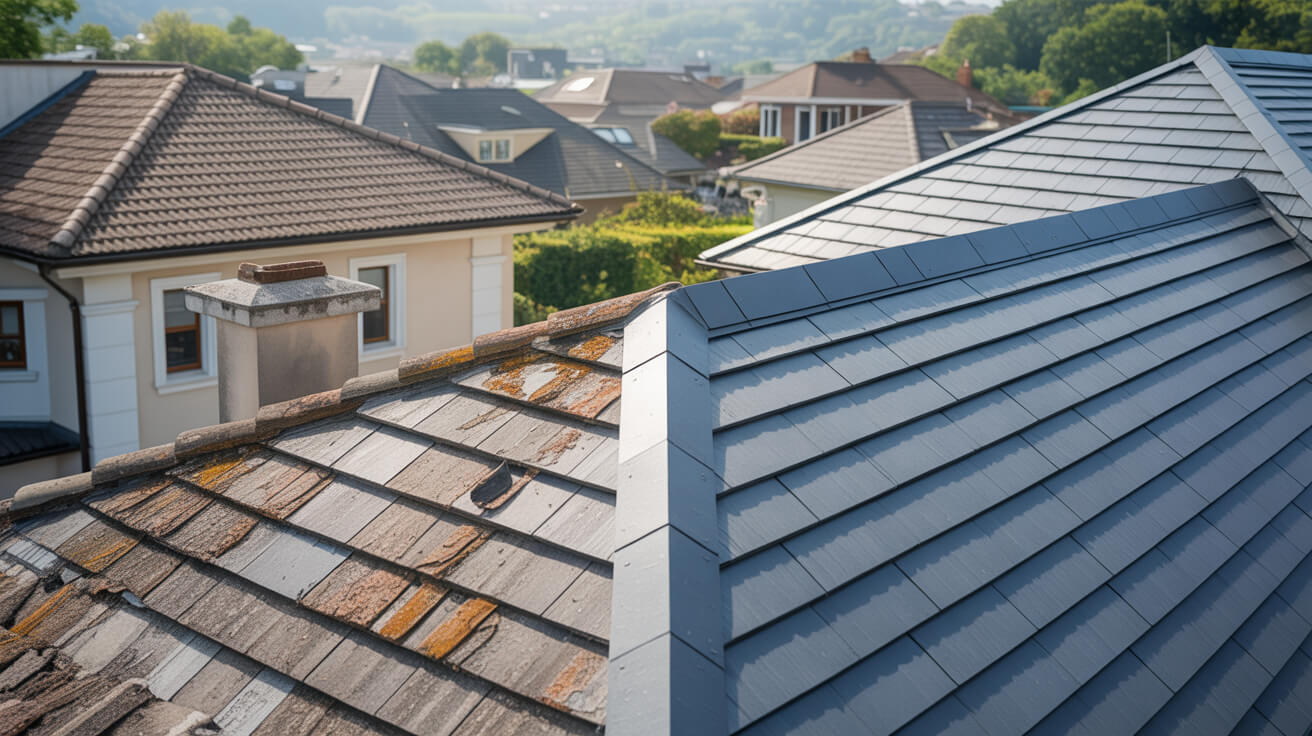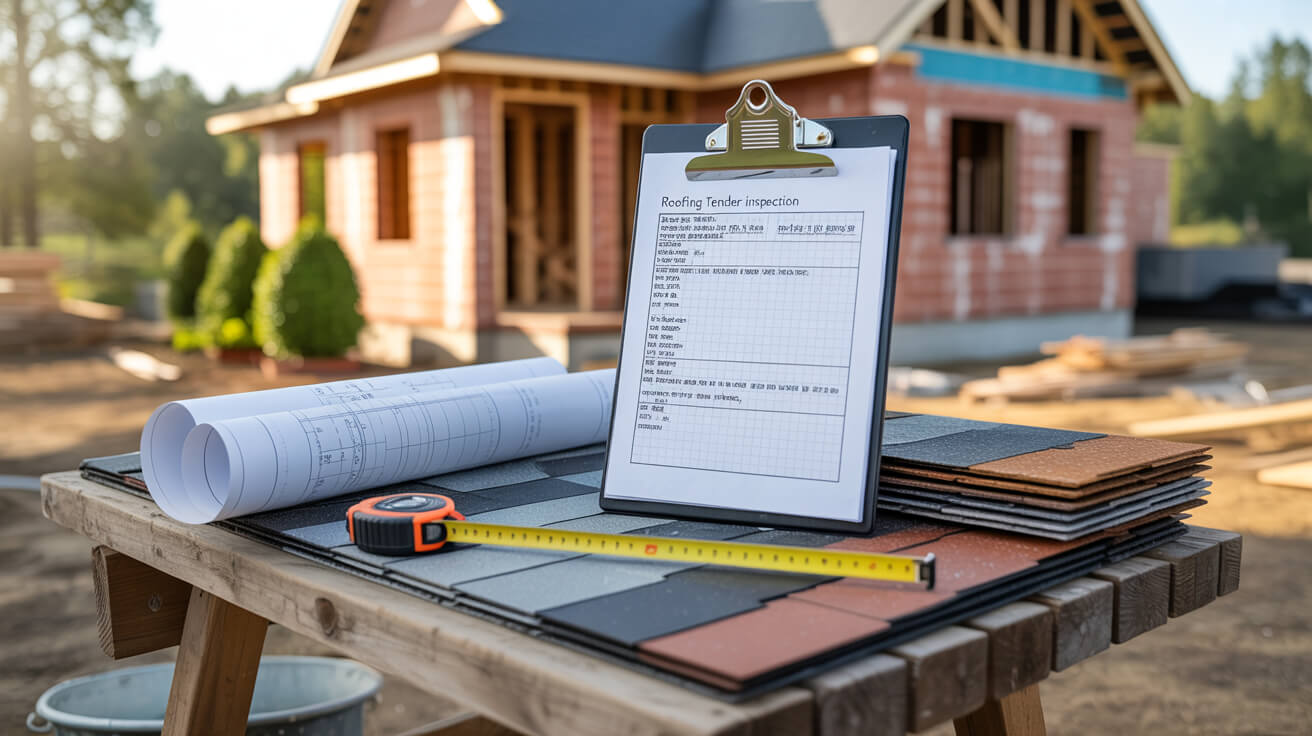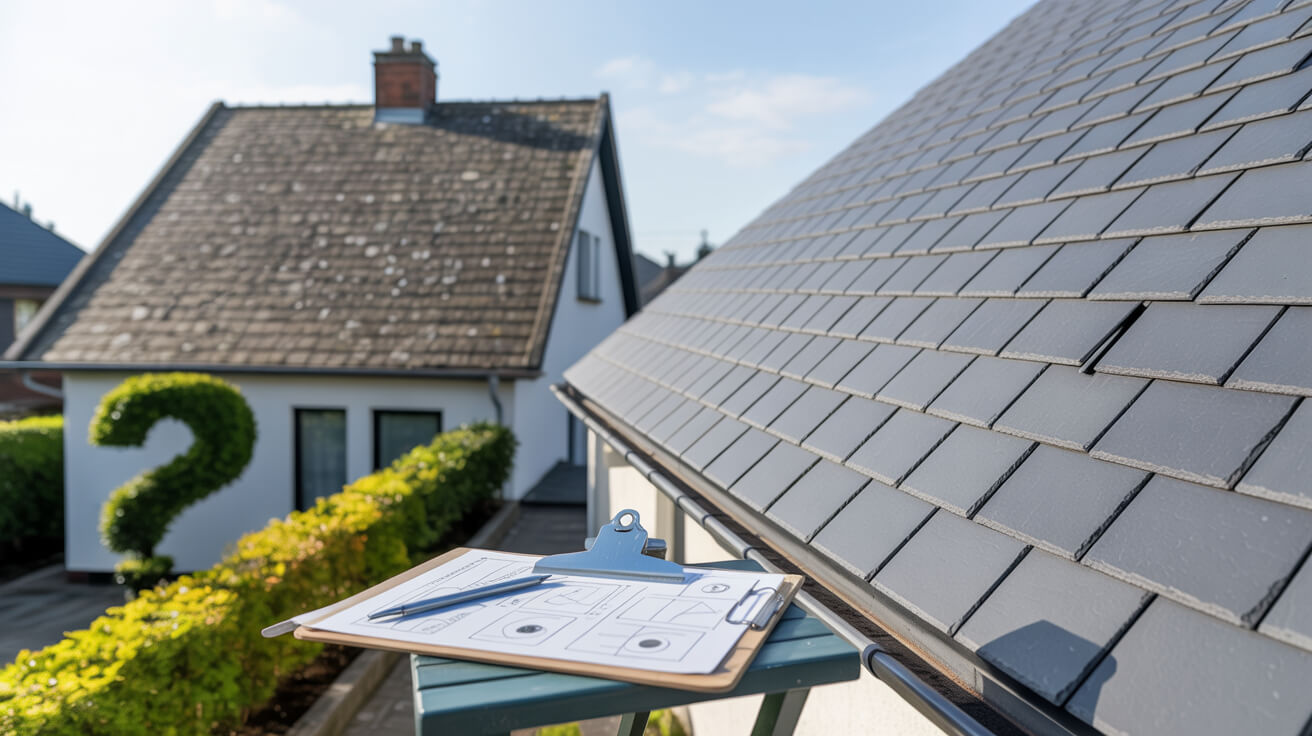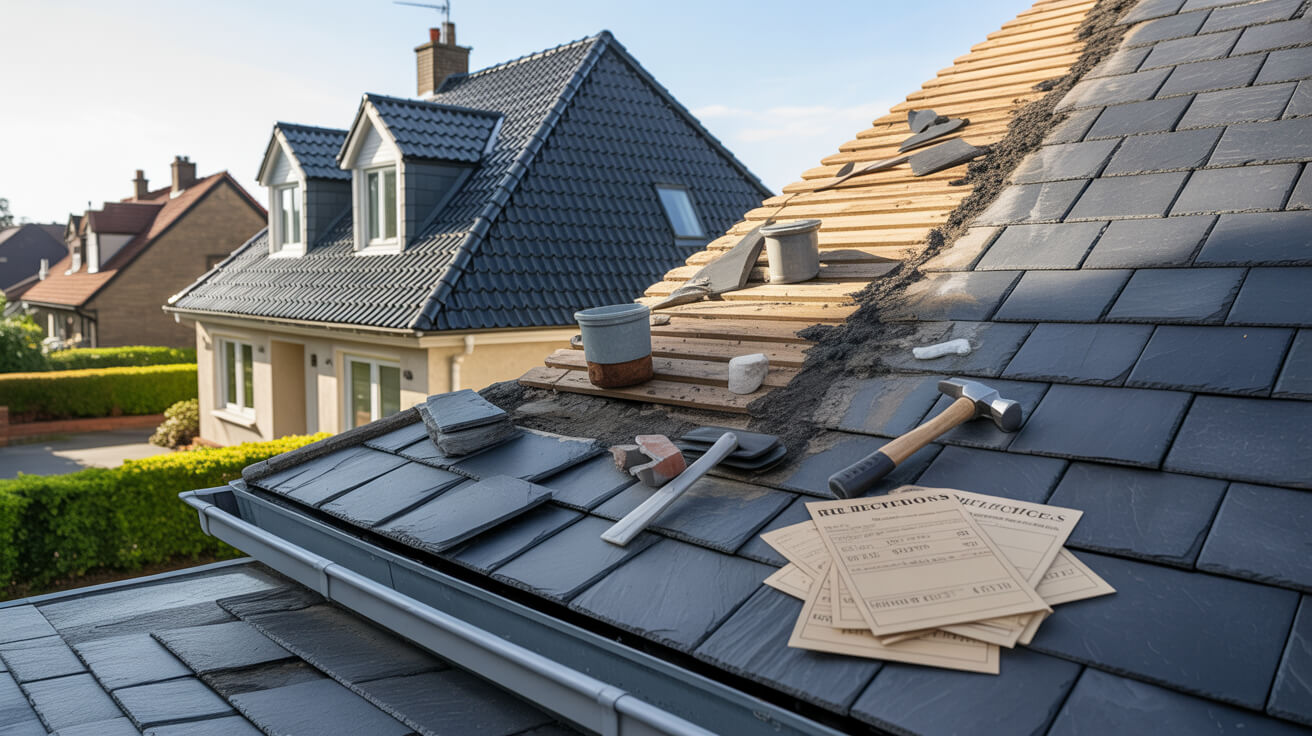 Slate, Zinc or Tile Matching Roof Materials with Regulations, Lifespan and Local Aesthetics
Slate, Zinc or Tile Matching Roof Materials with Regulations, Lifespan and Local Aesthetics
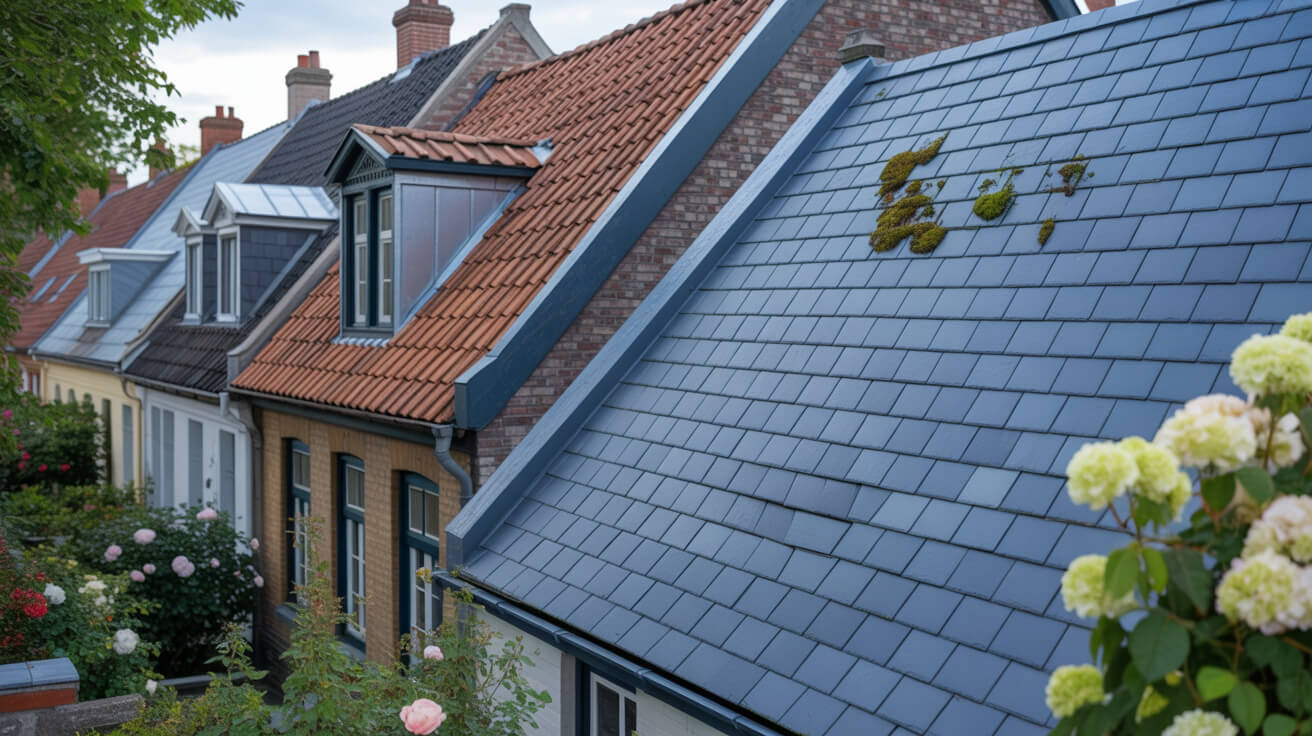
Selecting your roofing material is a decision that shapes your property’s long-term value, compliance, and visual character. In the UK, the choice between slate, zinc, or tile is more than technical—it’s about ensuring your building remains robust, regulations are met without drama, and the final roof appearance elevates your asset rather than diminishing it.
Key Criteria for Material Selection
- Regulatory alignment: Ensure compatibility with building codes (BS5534) and local planning guidance, especially relevant in conservation or heritage environments.
- Service life: Anticipate not just initial build quality, but ongoing durability across decades.
- Maintenance rhythm: Assess how often and how intensively you’ll need to intervene for cleaning, repair, or upgrades.
- Visual fit: Match the roof to your property’s historical age, location, and planning area, keeping the street aesthetic intact.
Why This Matters
A poorly matched roof increases long-term spend, reduces property appeal, can spark planning disputes, and may even threaten insurance or mortgage status.
Advance confidently. The right choice now sets you up for higher ROI, less risk, and peace of mind. For insight tailored to your project, leverage JG Leadwork and Roofing’s consultative expertise right from the planning stage.
What Distinguishes Slate Roofing for Durability and Heritage Compliance?
Slate’s place atop Britain’s buildings is earned, not assumed. It stands as the de facto standard for listed or period properties, and for any owner seeking a blend of staying power and architectural integrity.
Technical & Regulatory Foundations
Slate:
- Is quarried from hard, metamorphic rock, making it highly resistant to frost, rain, and even acid rain.
- Delivers a consistent, visual aesthetic: no two installations are identical, but all evoke traditional craftsmanship.
- Satisfies BS5534 and is a go-to for conservation authorities and heritage officers across the country.
| Attribute | Value |
|---|---|
| Lifespan | 80–150 years (often outlasting sub-structure) |
| Maintenance | Minimal; inspect every 5–10 years |
| Planning risk | Very low in listed/conservation areas |
Compliance Insights
Heritage planners often require not only “slate” but also specific origin (e.g., Welsh slate) for true restoration—rejecting synthetics or lookalikes. JG Leadwork and Roofing routinely steers restoration projects through these hurdles, documenting every supply and fixing for seamless sign-off.
Restore your heritage home’s value and aesthetics—partner with our specialists for site-specific guidance and planning support.

How Does Zinc Roofing Meet Modern Standards and Enhance Design?
Zinc has surged as a material valued by architects and practical owners alike, praised for its modern appearance, adaptability, and effortless compliance with energy and fire codes.
Performance, Longevity & Aesthetic Appeal
- Naturally develops a self-sealing patina: Minor scratches heal on their own, preserving the integrity of the weatherproof layer.
- Exceptionally lightweight: An asset for designs where structural load is a concern.
- Flexes for curved, angular, or architecturally ambitious roofs: No need to compromise on vision for function.
- Part L and Part B compliant: Zinc integrates seamlessly with modern insulation and fire safety requirements.
| Attribute | Zinc Roof Value |
|---|---|
| Durability | 40–70 years when installed and detailed correctly |
| Maintenance | Yearly inspections; rarely more |
| Aesthetics | Clean, minimalist, contemporary lines |
Practical Advantages
Unlike painted steel, zinc’s patina resists corrosion in urban, rural, and even coastal sites, reducing the need for coatings or frequent surface treatments.
Design contemporary, compliant roofs—with JG Leadwork and Roofing, get zinc expertise from regulatory submission to detail design.
How Do Tile Roofs Deliver Versatility and Cost-Efficiency?
Tile stands at the intersection of performance, affordability, and design flexibility. It excels in both new developments and historic areas where tradition meets current building practice.
Form, Function, and Financial Optimization
- Clay tiles: Enduring colour, natural water resistance, and lighter weight than some may expect—ideal for refurbishment in older homes.
- Concrete tiles: Maximize cost-effectiveness for volume sites, newer builds, or re-roofs requiring rapid project delivery.
- Diverse colour and profile options: Ensure planning compliance and boost kerb appeal on a wide range of properties.
| Tile Type | Lifespan (years) | Visual Options | Cost per sqm (installed) |
|---|---|---|---|
| Clay | 60–100 | High, period or rustic | Medium–High |
| Concrete | 40–60 | High, modern & classic | Low–Medium |
Tiles can be swapped or mixed atop the same roof—repairing a patch or matching a local colour is straightforward when you work with established suppliers and methodical contracts.
ROI Consideration
While tiles may require moss removal, occasional fixing or sealant, the upshot is a cost-effective roof that remains visually pleasing for decades with modest attention.
Navigating planning? Work with JG Leadwork and Roofing to match tile profiles and colours that unlock approvals, limit repairs, and anchor long-term value.
What Comparative Metrics Guide the Optimal Roofing Material Choice?
An at-a-glance comparison highlights where each material excels, and where you might trade upfront cost for future returns:
| Consideration | Slate | Zinc | Tile (Clay/Concrete) |
|---|---|---|---|
| Regulatory Fit | Best for heritage/listed | Best for new/contemporary | Broad approval, context-dependent |
| Longevity | Industry-leading | Very good | Strong (clay), Moderate (concrete) |
| Upkeep | Minimal | Low | Low to moderate |
| Upfront Cost | Highest | Medium-high | Medium-low to low |
| Planning Ease | Easiest for historic | Best for modern | Strong for refurbishment/new builds |
| Visual Profiles | Traditional, refined | Modern, crisp | Wildly variable, context-flexible |
| ROI Factor | Highest over 50+ years | High for select projects | Best short/medium-term (concrete) |
No single material “wins” in every scenario. The optimal roof balances your design intent, regulatory setting, lifetime budget, and personal risk tolerance.
For a side-by-side consultation with live samples, compliance data, and cost clarity, book with JG Leadwork and Roofing.
How Do Local Regulations and Environmental Factors Impact Your Roofing Material Decision?
Environmental and legal forces shape the boundaries of your roofing system before you even shortlist materials. Navigating their demands is just as important as choosing between cost and colour.
Core Regulatory Requirements
- BS5534: Sets installation and material benchmarks for slates and tiles throughout the UK, demanding proven wind resistance, secure fixings, and durability data.
- Conservation Area & Listing: May specify not just the material but also manufacturer, colour, and installation technique.
- Part L (Energy): Mandates minimum insulation values for roofs being replaced or newly installed.
- Fire Codes: Especially relevant on terrace properties and multi-unit schemes—zinc shines where low combustibility is specified.
Environmental Constraints
- Coastal exposure: Salt spray accelerates corrosion in metals that lack proper detailing; clay or well-sealed slate often preferred.
- Freeze-thaw cycles: Both slate and high-quality clay are rated to withstand repeated contraction and expansion.
- Urban pollutants: Patina-forming metals like zinc excel, requiring less frequent surface cleaning.
Economic Layer
Total cost of ownership comes back to balancing:
- Initial installation:
- Frequency and cost of repairs:
- Insurance premiums and mortgage eligibility:
- Approved material grants, notably for listed properties:
Bring your planning documents—even a sketch—and our specialists will translate codes, highlight hidden risks, and position your project for frictionless approval and longevity.

How Do Frequently Asked Questions Clarify Roofing Material Decisions?
Which material lasts longest, and how do I minimize future disruptions?
- Slate: has the edge for longevity, particularly in exposed climates.
- Clay tiles: closely follow, with some manufacturers guaranteeing 100-year performance.
- Zinc: can exceed expectations where regularly inspected and properly installed.
What about ongoing maintenance—how much will I really need to budget?
- Slate: Budget for visual checks and gutter clearance every few years.
- Tile: Watch for moss, rebed if strong winds strike, monitor valleys and flashings for leaks.
- Zinc: Light surface cleaning prevents silt build-up, while expansion joints should be checked for movement.
How does local planning authority impact my options?
- Areas of special townscape character, view corridors, or listed streets usually restrict you to natural slate or authentic tile. For new developments, the palette widens but planners still require documentary proof of performance and colour matching.
- With JG Leadwork and Roofing, you gain an ally adept at preparing evidence bundles, supply details, and technical drawings that shortcut bureaucratic holdups.
Is the extra cost for slate really worth it?
If resale value, compliance, and classic looks matter in your area—or for buyers in 5–10 years—yes. For short-term ROI, concrete tile or zinc, especially on modern builds, may suffice.
For all material questions—technical, aesthetic, or economic—JG Leadwork and Roofing’s consultative review brings clarity and peace of mind before you commit.
Book Your Free Consultation With JG Leadwork and Roofing Today
Personalized, regulatory-savvy advice is impossible to duplicate online. If your roof decision matters for your home, business, or heritage listing, book a free consultation with our team.
Whether you’re mid-way through project scoping or at the early dreaming stage, JG Leadwork and Roofing provides:
- In-person sample reviews and material comparisons
- Compliant system specifications and cost breakdown
- Preparation of planning and insurer documentation
- Specialist guidance from heritage to high-spec contemporary
Request your consultation today. Our goal is clear—help you achieve a roof solution that’s compliant, beautiful, and built to last.
Frequently Asked Questions
What Factors Should Guide Your Roof Material Selection—When Compliance, Longevity, and Visual Fit All Matter?
Navigating Material Choice with Strategic Precision
Roof material selection is never about aesthetics alone. Your choices send ripple effects through the entire value-chain of your property—impacting not only durability but also day-to-day maintenance, planning approvals, and ultimately, resale value. JG Leadwork and Roofing emphasizes a blended strategy where your technical priorities, regulatory requirements, and design aspirations merge.
Compliance leads; ignoring the local council’s preferred palette can derail plans or risk costly corrective works. British regulations like BS5534 and Part L don’t just exist to frustrate—they define structural anchoring, slate or tile thickness, wind-uplift resistance, and energy performance. Fast-forward a decade, and it’s compliance that kept leaks at bay—while neglected or non-compliant roofs rarely survive a second sale or mortgage evaluation.
But regulation’s only the first checkpoint. Maintenance overhead changes your return on investment; consider the annual cost of moss removal on concrete tiles, the practically maintenance-free decades offered by slate, or zinc’s periodic checks for patina integrity. Every cycle not only affects your wallet but also your asset’s uninterrupted comfort.
Visual compatibility can’t be overlooked; a mismatched modern metal roof on a period row is an open invitation for planning disputes. But when your roofing selection elevates your property—mirroring vernacular tones, surface profiles, and skylines—it becomes an asset, not an eyesore.
Key decision forces that should drive your process:
- Confirm local planning requirements long before tendering quotes
- Audit the expected cost and frequency of upkeep on each material
- Evaluate how lifespan aligns with your personal or investment horizon
- Seek material certifications and supplier warranties that protect resale value
- Favor future-proofing over simplicity—what seems easier often backfires at point-of-sale
At JG Leadwork and Roofing, we interpret regulations and emerge with solutions that reduce bureaucracy, unlock aesthetic value, and anchor your property’s resilience for years. Every roof we restore, replace or design is checked—by code, climate, and context—to provide the certainty you deserve.
What Makes Slate Roofing the Benchmark for Longevity and Heritage Compliance?
Why Choice of Slate is Synonymous with Lifelong Value
Slate stands alone at the intersection of tradition and technical performance. Chosen for centuries across Britain and Europe, genuine slate’s geological origins deliver a density and water resistance that tile and zinc—no matter how clever—rarely match head-to-head. Each quarried piece is individually graded and sorted, imbuing your roof with a uniqueness and consistency that factory tile systems can only approximate.
Heritage authorities don’t just tolerate slate—they demand it. Planning officers often specify provenance (South Wales, Spanish, or Westmorland) for listed and conservation properties based on microscopic mineral composition. This isn’t bureaucracy for its own sake; it ensures every structure retains the right character and performance even after a century of battering wind, rain, and frost.
Maintenance with slate is about vigilance, not constant patching: a slipped tile, an isolated flake, or an intruding fern root can be replaced or removed without disturbing the surrounding assembly. Modern dry-fix systems eliminate the pain of failing mortar, making periodic checks all you need to maintain full compliance and integrity.
Empirical performance:
- Service life: Frequently exceeds 100 years with attentive stewardship
- Maintenance: Minimal, largely moss brushing and slip checks
- Visual fit: Gold-standard for listed facades and British period charm
- Regulation: BS5534 compliant; the default code route for characterful properties
When you want a roof that both retains and grows asset value, while keeping planners delighted, slate routinely outpaces any substitute. Our heritage teams source, document, and install to the most exacting standards, ensuring your compliance letter arrives as soon as your roof has settled.
Why Is Zinc the Preferred Solution for Modern Performance and Effortless Compliance?
The Modernist’s Bridge to Robust, Streamlined Roofing
Zinc represents an evolutionary leap—offering a lightweight, flexible, and visually striking solution. The secret of zinc’s rise goes beyond its cool, architectural lines: as it patinates, it self-heals—small scratches or blemishes simply vanish as atmospheric exposure adds years of protective layering.
For architects, zinc is not just a design signature. It unlocks subtle options for curves, seams, and hidden gutters, and can hug even complex modern shapes without a seam out of place. For contractors, it’s a blessing; the reduced weight makes it viable where concrete or clay loading would require truss reinforcement.
And when you step into the world of regulatory audit, zinc’s value compounds. It easily meets Part L insulation mandates and, because of non-combustibility, reassures building control boards in tight terrace sites. With a documented lifespan of 40–70 years and only modest rinsing or inspection, it offers a real counterpoint to owners who want sharp aesthetics and easy compliance.
Technical snapshot:
- Weight: Among the lightest of all roofing materials
- Patina: Self-repairing, corrosion-neutralizing
- Regulatory standing: Part L and Part B compliant across most new build and retrofit contexts
- Design freedom: Fast to install, adaptable to precise requirements
Our modern-roofing division shepherds every client from planning scope through zinc specs, engineering, and paperwork, ensuring your ambition never clashes with local sentiment or code precision.
How Do Tile Roofs Outperform for Adaptability, Maintenance, and Planning Approvals?
The Enduring Favorite When Flexibility Is Required
Tile roofing, both clay and concrete, has become the safe harbor for a reason—coupling vast style options with firm regulatory backing. As councils seek to preserve the broader vernacular, and homeowners look for proven value without premium initial spend, tile’s adaptable format becomes irresistible.
Clay tiles bring deep, weather-baked colors and resilience against frost or sun exposure, often lasting 60–100 years. Concrete tiles—especially when fit by a knowledgeable team—offer a wider palette for new builds and fast replacements, balancing up-front economy with reasonable maintenance.
Tiles make repairs uncommonly easy: swapping a broken piece, managing valley flow, or redoing a verge is faster, less disruptive, and usually requires no expensive scaffolding. The modular nature also means that matching a color or profile to your neighbors, a frequent planning requirement, is rarely a stumbling block.
Key considerations:
- Clay tile longevity: 60–100+ years; concrete: 40–60
- Maintenance: Generally low, driven by moss, isolated breaks, or guttering issues
- Compliance: Tiles often pre-approved for conservation areas by default
- ROI: Repairs, re-roofs, or expansion can be undertaken incrementally, matching budgets to site inertia
Our consultants at JG Leadwork and Roofing analyze every project against your district’s color charts and historic requirements, turning paperwork into local respect and years of reliable, sale-ready performance.
Which Comparative Metrics Reveal the True Winner Among Slate, Zinc, and Tile?
The Decision Table—Objective, Data-Backed, and Context-Driven
No material holds the “best” title across all metrics. Instead, genuine confidence—and planning stability—comes from quantifying how each serves your unique scenario. This is where JG Leadwork and Roofing’s data-centric process shines: every property gets a bespoke risk-reward, cost-durability, and compliance-fit chart.
| Metric | Slate | Zinc | Tile (Clay/Concrete) |
|---|---|---|---|
| Typical lifespan | 100+ years | 40–70 years | 40–100 years |
| Planning friendliness | Superior for heritage | Ideal for new/modern | Adaptive, often default |
| Maintenance schedule | Rare checks | Periodic rinsing | Occasional, easy swap |
| Upfront investment | Highest | Moderate-High | Low–Moderate |
| Weather resistance | Elite, frostproof | Self-patinating | Good, but varies |
| Visual harmony | Heritage-defining | Crisp, design-led | Universally adaptable |
| Regulatory approval | Default for period | Strong in new builds | Usually pre-cleared |
| Future-proof ROI | High—never outdated | Medium—design-driven | Steady, context-safe |
The art is in reading this table through your property’s lens: will you require planners to sign off on every detail? Is visual cohesion with neighbors vital? Or do you want modern minimalism that meets current and coming regulations? Every box ticked is another worry off your list—and another argument for contacting a specialist contractor early, before design or purchase commits you irreversibly.
How Do Local Codes and Environmental Factors Shape and Sometimes Sabotage Material Selection?
Anticipating, Not Reacting to, the Real Gatekeepers
Local rules and the microclimate around your property wield more power over your material choice than many realize. An apparently “compliant” roof can fall afoul of planning officers who want every rooftop echoing the townscape—and insurance policies that won’t pay out if wind-uplift fixings or frost-proofing aren’t present.
Coastal homes, for example, subject even premium-grade slate or zinc to salt-laden weather, demanding specific underlayments and confirming every slab is properly sealed. In upland or high-wind areas, both tiles and slates must be mechanically fixed and, if regulations stipulate, clipped or banded.
Key planning/environmental barricades:
- Strict conservation codes demanding not just material, but also color, supplier provenance, and install method
- Microclimate variances (salt spray, frost wedge, rapid rainflow) that erode endurance for under-specified systems
- Builder and installer experience: missed fixings, improper underlays, or incorrect venting can turn a “compliant” design into a costly problem years down the line
Securing approval is about preemption. Our technical specialists conduct site and design audits tailored to your geographic, aesthetic, and financial criteria, ensuring you cross every regulatory threshold and mitigate the region’s unique wear risks.
How Do Answers to These Roofing FAQs Enable Confident, Resilient Material Choices?
Securing Your Outcome with Evidence and Expertise
The right FAQ, when forged from live data and on-the-ground heritage, is more than a knowledge bullet—it’s an operational edge. Every planning board, building insurer, and future buyer prefers owners who think ahead.
By uncovering how maintenance cycles shift with moss-prone valleys, how regulations specify flashing thickness, or how the resale market penalizes non-compliant, low-value substitutions, you turn “potential pitfalls” into preemptive wins. Data on lifespan means you prevent expensive surprises after storms, while visual guides make sure what’s on your roof never jars the street—much less a local inspector.
When you’re ready to move beyond guesswork and forum hearsay, the team at JG Leadwork and Roofing stands uniquely positioned to transform complexity into clarity—delivering site-specific answers and solutions that pass every inspection, upgrade value, and minimize disruption for decades.
